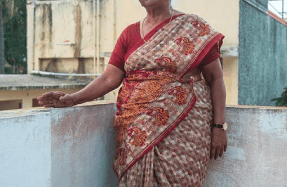MANUFACTURING NORMALCY


ON 9 AUGUST, the last Friday before Eid-ul-Adha, thousands gathered in the streets of Soura, a neighbourhood in Srinagar, for a massive protest against the Indian state. Four days earlier, the home minister, Amit Shah, had announced the effective abrogation of Article 370 in the Constitution, which had provided Jammu and Kashmir a special status that allowed the state to have its own separate constitution and state flag. In addition, the government also divided the state into two union territories: Jammu and Kashmir, and Ladakh. The move virtually stripped the local leadership of political power, concentrating it completely in the hands of the central government.
According to the New York Times, the crowd chanted slogans of freedom and waved Kashmiri flags. The procession was blocked by security personnel, who, according to the Washington Post, “began firing tear gas canisters and shotguns carrying pellet rounds at the crowd.” Though they found their own eyewitnesses, both papers were following up on video reports put out by the BBC and Al Jazeera, in which everything described can be seen and heard.
These stories and videos were significant as they showed a Kashmir that was completely different from the one shown in the Indian national media. Ever since Shah’s announcement, the Indian government had been at great pains to show that there was no major discontent about its decision in the state. The national media repeated constantly that all was “normal” in Kashmir. The narrative of normalcy played out on primetime television and the front pages of newspapers, and was repeated endlessly on Twitter by journalists who boasted about flying over Kashmir in government helicopters. The video of the huge crowd gathered in Soura, the sight of people running amok and the hammering sound of shotguns in the background punctured that narrative.
The government immediately issued a statement denying that the protests ever happened. On 10 August, the ministry of home affairs tweeted that the news was “completely fabricated and incorrect.” Gaurav Arya, a former army officer and defence analyst, claimed on Twitter the next day that the videos were fabricated. “There are over 100 reporters in Kashmir right now…reporting live for past 5 days. BBC is lying,” he replied to a tweet asking him about the protests. Abhijit Iyer-Mitra, a Delhi-based defence analyst and a columnist for The Print, started a Twitter thread to point out all the possible ways in which the protesters could be discredited. He pointed out that the flags carried by protesters in the video bore the motifs of Islamic State and Jaish-e-Mohammad, and that they were chanting the names of al-Qaida terrorists. (In his own screenshot of the video, the biggest banner was about the abrogation of Article 370.) They were pelting stones. And they “MUST have turned violent as they normally do to get shot at.” Swarajya published a story on their website about Iyer-Mitra’s tweets.
There were wilder claims going around, such as that the video was in fact an old one, and was from Pakistan-occupied Kashmir, not Srinagar. Several others regurgitated these claims, even though these could not stand even the most basic scrutiny, given the banners held up by the crowd said the protest was about the abrogation of Article 370 and the dome of the Jenab mosque—which stands in Soura, Srinagar, and not in PoK—could be seen in the background.
A total communication blackout was enforced in the state, disrupting internet connectivity, mobile networks and phone lines. About fifty thousand troops began patrolling barb-wired streets. (There are about half a million security personnel already stationed in the region.) The security forces clamped down hard on any attempt at protest. There have been numerous arrests and several casualties. An entire state was turned into a prison, and its populace forbidden contact with the outside world.
The four biggest English-language dailies—the , the , and the did not cover the incident, or drastically played down its importance. on 10 August, mentioned the incident in a small story headlined, “Friday prayers are peaceful.” Another report, on the front page, at least twice as long, had Kashmiris lining up in queues to make a phone call, in which the reporter saw “tears of both anger and relief.” The used a government statement chiding Pakistan as the lead headline of its front page, which also had a story about the struggle of ailing Kashmiris trying to access government hospitals. The mentioned the incident in a ground report on “Sombre Eid” in the valley; the mention of also put out a government statement as its lead headline on the jacket before its front page and recorded the protest in a story headlined: “Stray Violent Protests in Valley Reported.”
You’re reading a preview, subscribe to read more.
Start your free 30 days



